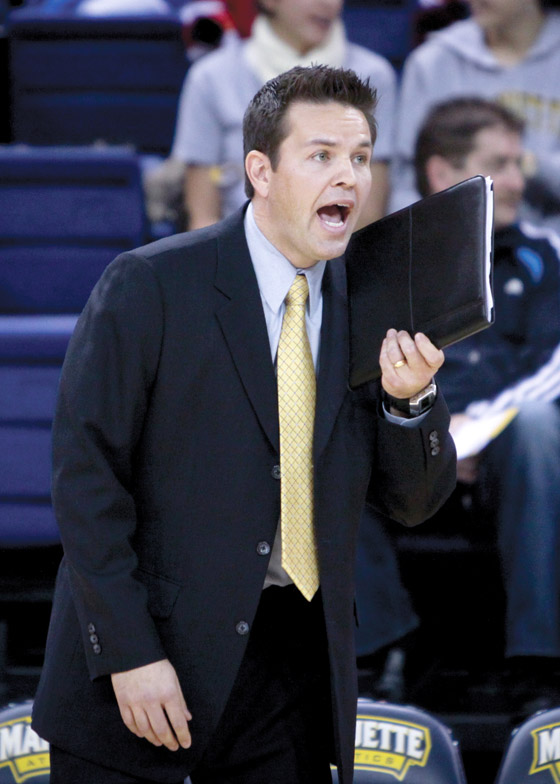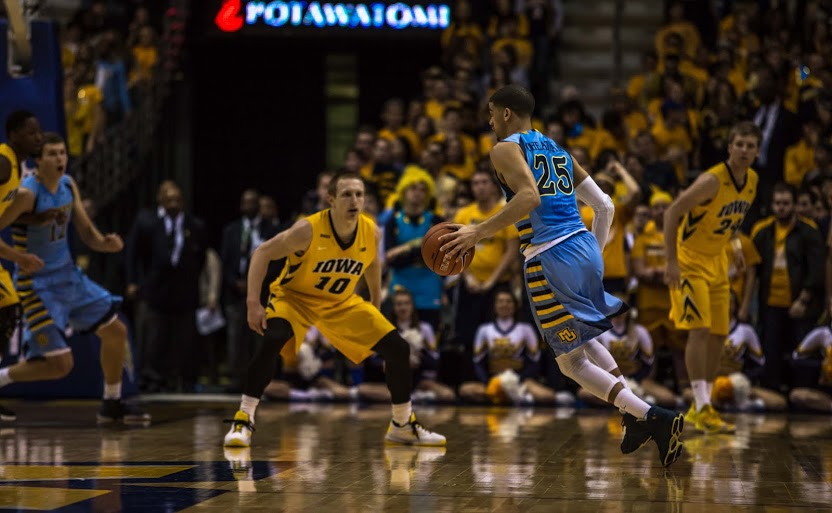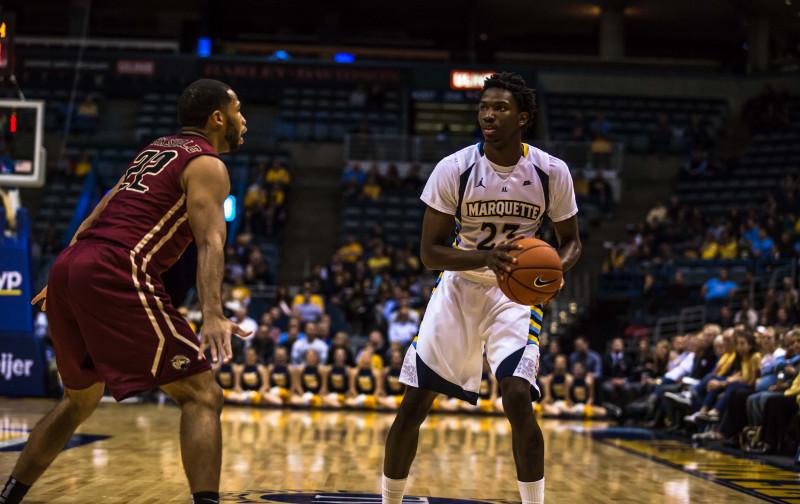Sophomore outside hitter Ciara Jones rises over the net before drilling the ball straight down to the floor for a kill, sending the crowd into a frenzy. Not only do plays like this give Marquette a point, but they also completely swing the game’s momentum.
Nothing in volleyball is quite as exciting as an emphatic kill. Like a slam dunk in basketball or a home run in baseball, it gets the crowd riled up.
However, big kills do more than just garner cheers.
“You need to show that you can hit,” junior middle hitter Rabbecka Gonyo said. “When you show them that, it puts them back on their heels.”
In volleyball, it is key that the defense be kept back on its heels, or else it will pick up too many balls. When the defender is on her heels, she has very little range of motion. Reaction times slow down and hitting percentages go up.
Most importantly, it opens up the floor for the tip. According to coach Bond Shymansky, the tip is volleyball’s equivalent of the changeup in baseball. No one will come out saying, “Whoa, did you see that changeup?” but when done correctly, it adds variety.
The tip is a soft tap that, in a perfect world, drops between the front and back rows. It works best when it comes at unexpected times, like after a big hit. This is when the defenders are furthest back and on the back of their heels, leaving them flatfooted and unable to react.
“You need to come out pounding the ball,” Gonyo said. “If you do, it opens up the floor for tips.”
Gonyo executed this strategy to perfection in Marquette’s 3-2 victory over Iowa this weekend in its first spring season home game.
In the fourth set, after she had repeatedly smashed kill after kill on a back slide earlier in the game, Gonyo went up as if she was going to put it down hard, but instead coyly dropped it into an open spot on the floor for an easy point to make it 23-11.
Tips are most effective, though, when used selectively. A pitcher who throws too many changeups in a row will end up seeing his toss in the upper deck at some point.
“A hitter who tips too much loses effectiveness and gives opponents an easy dig,” Shymansky said.
“I tip when my jump isn’t in sync with the set,” Gonyo said. “Sometimes a back row player will call it out if they see an open spot on the court.”
Defensively speaking, it is crucial to to keep an eye on the ball at all times in order to effectively dig a tip.
“You don’t want to leave too early,” freshman libero Kelsey Warner said. “You have to stay put until you see where it’s going.”
Shymansky also said a defender must be mentally prepared for a tip.
“If you’re not mentally anticipating a tip, we describe it as the Scooby Doo steps where the feet start moving but the body doesn’t go anywhere,” Shymansky said. “You end up Scooby Doo-ing a lot if you’re not mentally prepared.”








